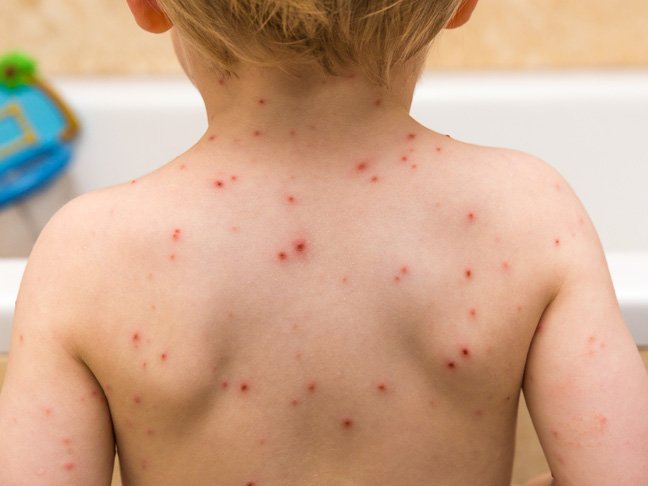If you’re looking up types of rashes, chances are your child already has one. Don’t panic! There are many types of rashes out there, and the good news is that most of them are easy to treat. Here’s a quick guide to the types of rashes kids commonly get — and what to do about each one.
Can a virus cause a rash?
There are several viruses that can cause different types of rashes, including:
1. Coxsackieviruses, commonly known as hand-foot-and-mouth disease, causes blisters around the mouth and sometimes on the hands and feet. It is not harmful, doesn’t require treatment, and can usually be prevented by washing hands with soap and water.
2. Chickenpox is characterized by small, itchy red blisters and is highly contagious. Consult your doctor if you think your child has chickenpox.
3. Measles presents as small splotches of red spots starting at the head and moving down the body but is rare now because of vaccines. Consult your doctor if you think your child has the measles.
4. Roseola starts with a high fever and then usually causes a rash of small, flat, pink patches. You should consult a doctor anytime your child has a fever of higher than 103, has a seizure, or is unusually lethargic. This rash appears at the end of the illness and should go away on its own.
What do fungal rashes look like?
Kids like to play in the dirt and put things they shouldn’t into their mouths. The end result is sometimes a fungal rash such as athlete’s foot, candida, or ringworm. Athlete’s foot is often spread in locker rooms or other places where people walk barefoot. It causes itchy, scaly spots between the toes. Candida may be the culprit behind a persistent diaper rash or thrush, which presents as white patches inside the mouth. Over-the-counter antifungal creams are usually used to treat fungal rashes.
What kinds of rashes do bacteria cause?
These are several types of rashes caused by a bacterial infection, including:
1. Impetigo, which spreads from the skin’s surface to deeper layers, is usually seen around the mouth but can be found anywhere on the body. It can be caused by the Streptococcus (step) or staphylococcus aureus (staph) bacteria. It is highly contagious but easily treated with a topical cream from your doctor.
2. When a child has Cellulitis, the skin appears hot, red, and swollen to the touch. This type of rash most often appears on the lower legs. It, too, can be caused by the Streptococcus (step) or staphylococcus aureus (staph) bacteria, particularly around cuts, puncture wounds, or athlete’s foot.
3. Folliculitis is an inflammation of the hair follicles, and it most commonly appears on the arms, legs, back, and bum. It’s caused by bacteria or yeast, and can be contracted by swimming in pools (or soaking in hot tubs) not properly treated or wearing tight clothing.
If you suspect that your child has a rash caused by a bacterial infection, contact your child’s pediatrician right away.
What are parasitic rashes?
Lice and bed bugs are two common examples of parasites that can cause a rash. Lice bites are typically only seen when you comb through the hair, but bed bug bites may appear all over the body. These bites present as a pinpoint of red surrounded by a larger area of irritation While no treatment for the actual rash is usually needed, you do need to eradicate the offending parasite that caused the rash.
What are allergic rashes?
Food allergies, as well as exposure to plants like poison ivy, poison oak, or poison sumac, can cause itchy rashes upon contact. Typically, you see food allergy rashes around or inside the mouth, on hands and in the diaper area. You may want to get your child tested for food allergies to prevent this type of rash from recurring. Poison ivy or poison oak rashes will appear on any surface the plant oil has touched. These types of rashes typically resolve themselves.
Other skin conditions like cradle cap, baby acne or eczema may look like rashes but are typically only side effects of your baby’s skin adapting to life outside the womb. Regardless of what type of rash you think you are dealing with, any time your child is very unwell or seems distressed, it’s safest to call your pediatrician.
Photo: Getty








